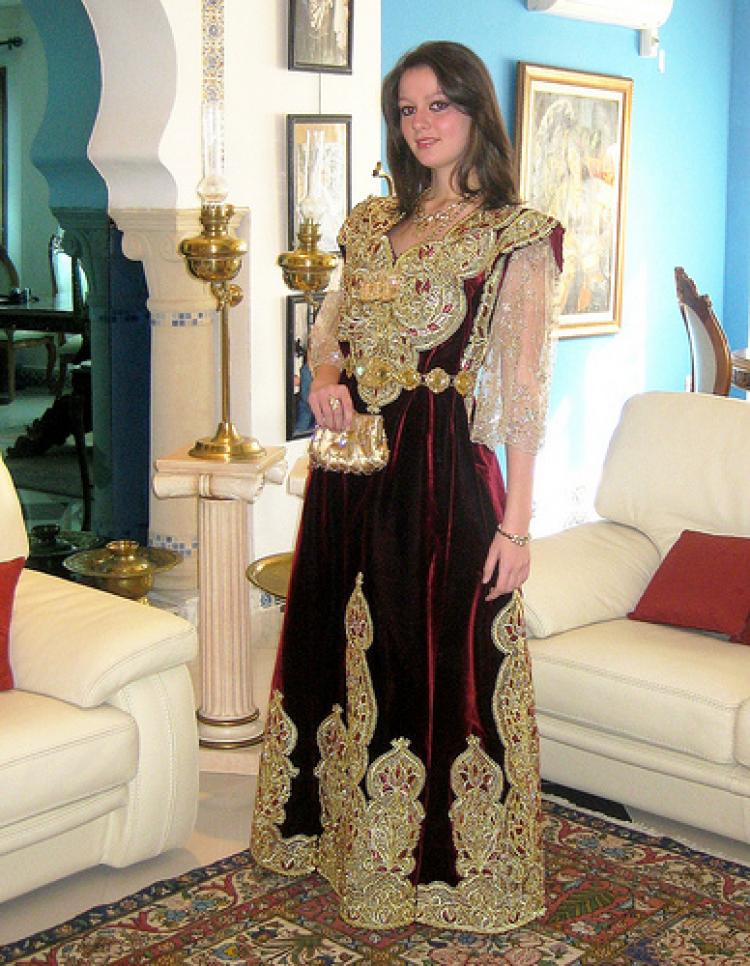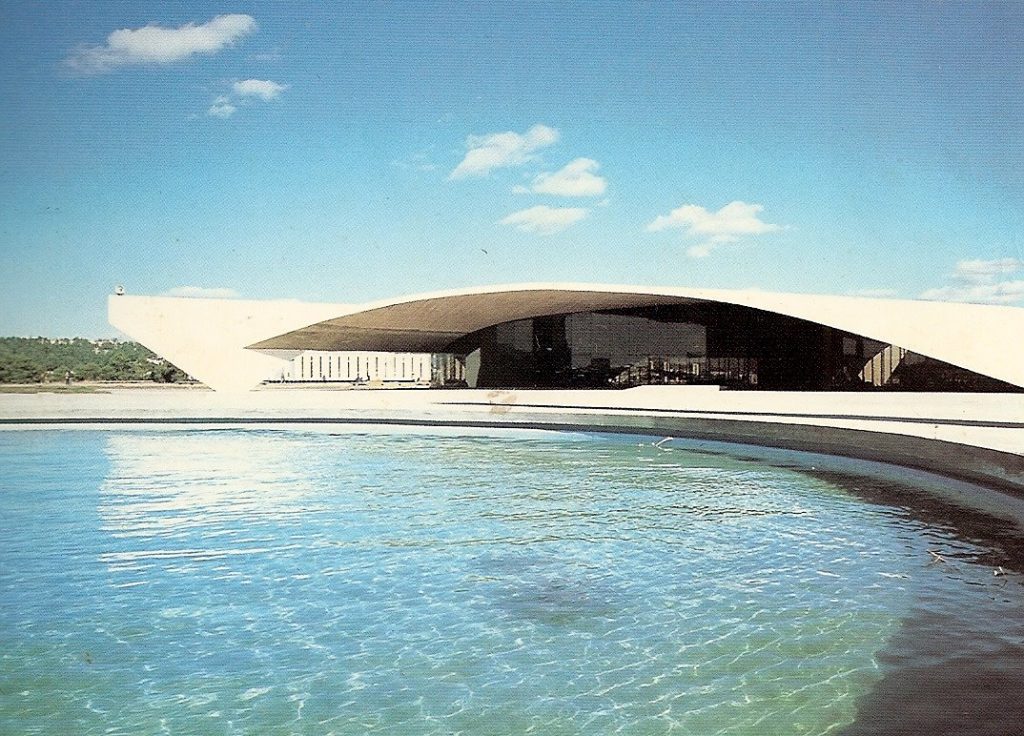Constantine
Constantine (Arabic: قسنطينة Qusanṭīnah, Berber languages: ⵇⵙⴻⵏⵟⵉⵏⴰ), also spelled Qacentina or Kasantina, is the capital of Constantine Province in north-eastern Algeria. During Roman times it was called Cirta and was renamed “Constantina” in honour of emperor Constantine the Great.
During the Middle Ages it was conquered by the Arabs in the seventh century and it will be successively part of the Aghlabid kingdom, the Fatimid empire then the Zirid, Hammadid, Almohad and Hafsid kingdoms.
In the sixteenth century, it became the capital of the Constantine beylik, seat of the beylical and vassal power of the regency of Algiers. At the time of the conquest of Algeria by the French it will be taken in 1837, after a failure in 1836. Integrated to wilaya II, the Constantinois, by the FLN during the war of Algeria it becomes the seat of its own wilaya to independence of the country.
Slightly inland, it is about 80 kilometres (50 miles) from the Mediterranean coast, on the banks of the Rhumel river.
Regarded as the capital of eastern Algeria and the centre of its region, Constantine has a population of 448,374 (938,475 with the agglomeration), making it the third largest city in the country after Algiers and Oran. There are museums and important historical sites around the city.
It is often referred to as the “City of Bridges” due to the numerous picturesque bridges connecting the mountains the city is built on.
Constantine is also nicknamed the “city of the old rock”, “city of ulemas”, also “city of eagles” or “city of malouf”, Constantinian variant of Arab-Andalusian music.
In 2015 the city of Constantine is the Arab capital of culture, the second largest city in Algeria to be chosen to organize this event after Algiers in 2007.
History
Ancient
The city was originally created by the Phoenicians, who called it Sewa (royal city). Later it was renamed Cirta, by the Numidian king Syphax, who turned it into his capital. The city was taken over by Numidia, the country of the Berber people, after the Phoenicians were defeated by Rome in the Third Punic War. In 112 BC the city was occupied by Jugurthawho defeated his half-brother Adherbal. The city later served as the base for Roman generals Quintus Caecilius Metellus Numidicus and Gaius Marius in their war against Jugurtha. Later, with the removal of King Juba I and the remaining supporters of Pompeyin Africa (c. 46), Julius Caesar gave special rights to the citizens of Cirta, now known as Colonia Sittlanorum.

In 311, during the civil war between emperor Maxentius and usurper Domitius Alexander (a former governor of Africa), the city was destroyed. Rebuilt in 313, it was subsequently named after emperor Constantine the Great, who had defeated Maxentius. Captured by the Vandals in 432, Constantine returned to the Byzantine Exarchate of Africa (i.e. North Africa) from 534 to 697. It was conquered by the Arabs in the 8th century, receiving the name of Qacentina.

Modern
The city recovered in the 12th century and under Almohad and Hafsid rule it was again a prosperous market, with links to Pisa, Genoa and Venice. Since 1529 it was intermittently part of Ottoman Empire, ruled by a Turkish bey (governor) subordinate to the dey of Algiers. Salah Bey, who ruled the city in 1770–1792, greatly embellished it and built much of the Muslim architecture still visible today.
In 1826 the last bey, Ahmed Bey ben Mohamed Chérif, became the new head of state. He led a fierce resistance against French forces, which had invaded Algeria four years later. By 13 October 1837, the territory was captured by France, and from 1848 on until 1962 it was an integral part of the French motherland and centre of the Constantine Département.
Geography

The city of bridges
The topography of the city is unique and it determines the need for bridges. The El-Kantara bridge is one of the oldest, built in Roman times and restored by Salah Bey in the eighteenth century and in 1863. In addition, the bridges of Sidi M’Cid and Sidi Rached who owe their named after the neighboring mausoleums of the same-name marabouts, were inaugurated in 1912. At the entrance to the gorge, is the Devil’s Bridge, named after the “devilish” noise made by the waters in this place and at their end, the bridge of the falls, located at the beginning of the plain of Hamma
Among other bridges, the Mellah-Slimane bridge, formerly Perrégaux, is reserved for pedestrians only. Its particularity is to be accessible, side “Rock” by an elevator and a stairway that brings pedestrians to the street level trik ejdida (“new street”). There is also the bridge of Arcole, an iron bridge, now closed.
A new cable-stayed bridge, the Trans-Rhumel viaduct or Pont Salah Bey is opened to traffic on July 26, 2014, inaugurated by Prime Minister Abdelmalek Sellal, named after the governor of Constantine Salah Bey from 1771 to 1792. From 1111 m long and designed according to the design of Dissing + Weitling Architecture, it makes it possible to make the junction, above the Rhummel, between the place of the UN, in the center of the city and the heights of the city.
Today the most important bridges are:
- Sidi M'Cid Bridge (1912), a suspension bridge with a length of 168m
- El-Kantara bridge which leads toward north,
- Sidi Rached bridge (1912), a long viaduct of 447ms and 27 arches, designed by Paul Séjourné,
- Devil's bridge, a tiny beam bridge,
- Falls bridge, formed by a series of arches on top of a waterfall,
- Perregaux footbridge (1925), a suspension bridge,
- Salah Bey Bridge (Trans-Rhummel viaduct, 2014), the first cable-stayed bridge in Constantine, designed by Dissing+Weitling architecture,
- Meddjez Dechiche Bridge

Education
Constantine has multiple universities: Mentouri Public University, designed by the Brazilian architect Oscar Niemeyer, and Algerian architect Rashid Hassaine, Zerzara maths and architecture university, Emir Abdelkader University which is one of the biggest Islamic universities with many faculties covering religious studies, foreign languages, literature. Constantine’s new town “nouvelle ville ali mendjeli” has two big universities: Université Constantine 2 known as “lella nsoumer” offering maths, computer and economy majors, and the new university is actually a university pole with more than 20,000 students, 17 faculties and more than 40,000 residents. It is now the largest African university under the name of “Université de Constantine 3”.

Embroidery
The ample and elegant Gandoura in velvet, with golden threads, which the beautiful Constantinans wear with pride during wedding and circumcision celebrations, is undoubtedly the paragon of the know-how of the mistresses-seamstresses of the Rock.
The ancestral know-how passed down from mother to daughter since time immemorial has made it possible to give all its authenticity to this toilet, dressed with flamboyant arabesques, commonly known as Gandoura el Ksentiniya, or even Gandouret El Fergani in tribute to the Fergani family, precursor of the haute couture in Constantine, which has become indispensable in the trousseau of brides in the city of bridges.
The Constantine Gandoura, very popular even across borders, is a long dress with no collar and removable sleeves. It has its roots in the cultural “miscegenation” that the city of the Old Rock has known for centuries.
It is richly embroidered with gold threads according to the technique of ” Fetla ” or ” Medjboud ” (very fine gold embroidery).
This true ” work of art ”, whose ” little secrets ” are known only to the craftsmen of constantinois craftsmanship, expresses the refinement of the city women living in this city, and reveals the beauty of the Algerian woman in general and Constantine in particular.
This mythical garment, traditionally burgundy colored, is an integral part of Algerian culture, even though it has undergone some changes with regard to the diversity of colors and forms of embroidery. Today, in fact, the new bride can choose between the colors green based, midnight blue or mauve.
The realization of this Gandoura obeys very precise rules, affirms Malika, a seamstress very ” run ” in Constantine, keeping herself, however, to divulge her little secrets. A boss (drawing), she explains, must be chosen and placed on a tanned leather, before being engraved on the leather and stuck to be left for a few days under an operation that is called locally ” lafridha ”.


Then comes the final phase, that of the gold thread embroidery (” Madjboud ” or ” Fetla ”) and the ornamentation with glitter and golden bagpipes (very fine and twisted metal thread, used embroidery), according to taste.
The embroidery covers the entire dress. They are focused on decorations with flowers, butterflies, birds or arabesques drawn to the ” feeling ” of the seamstress.
The traditional Gandoura of Constantine, whose manufacture can take a whole year, is characterized by its realization in three distinct parts which one calls “kh’ratate”. Only by this means can we keep the flared shape of this festive dress, Malika argues.
The price differs from one dress to another according to the decoration. The cost of a dress made using the technique of ” Madjboud ” varies between 50,000 and 100,000 dinars, sometimes more. Certainly more when we know that the Constantinoises must wear with this dress a “M’hazma” (belt) made of louis of gold of different values.
By Razika Bessikri (APS – 20 Avril 2015)
Craft
The craft activity remains important, one practices the embroidery, the brassware of which the production of brass plates with the reasons of Ottoman inspiration, the boiler-making, the sculpture on wood and the pottery. Constantinese embroidery features arabesques of Turkish influences with dark colors and golden threads. Constantine women wear a black haik called M’laya as a sign of Salah Bey’s mourning. The latter remains today very rare given that the Constantine women wearing the modern veil found throughout the Arab-Muslim countries.
Brassware has existed in Algeria since the Middle Ages. The emblematic objects of Constantine are, El-Kattara (drainer) an object that serves to produce perfumes rose and jasmine and el Kirouana sort of basin with slightly flared walls, used for the toilet.
The city has keep his souk “ennahassine” (copper market) in the medina named: CITE BARDO.

Culinary arts

Constantine also has a rich cuisine. Among the culinary specialties that are consumed in Ramadan, for example, is Tajine el ain, a dish made with prunes to which are added almonds and meat sprinkled with refined sugar, the Djari, dried wheat chorba, grilled and crushed; chbah essafra, kefta, h’mis and bourek. We can also mention the many pasta dishes from Constantine, such as trida, tlitli, rechta, chakhchouka.
The local pastry is also varied. Let us quote the djawzia, baqlaoua, ghribia, bourek el renna, maqroud el maqla. The dessert consists of seasonal fruits and m’halbi, made from milk, cream of rice, sugar and rose water.
The traditional Constantinese cakes are a kind of pastry that is based on ancestral specialties born in the oldest cities of the country like Constantine. The history of this city has made its pastry, a rich and varied pastry. This one has undergone a vast influence of certain regions of the world notably of Andalusia with the coming of the Moors, the Middle East during the Islamic Conquest but also by the Ottoman presence.
More and more popular, Constantine pastry is exported to neighboring countries, Europe and North America. It is often described as “Maghrebi pastries”, “Arab” or “Oriental” pastries.

Music
Constantine is the cradle of one of the three Arabo-Andalusian schools of music. The Constantine version is called the malouf which means “faithful to tradition” whose rhythm and instruments differ from the noubas of Algiers and Tlemcen. Other musical styles of the city are zajal, a sacred music, the fkirette sung by women as well as hawzi and mahdjouz literary style. An international festival of malouf is organized in the city, which annually attracts Arab-Andalusian music artists from North Africa, Europe, Turkey and the Middle East.

Mohamed Tahar Fergani - Le maitre du malouf
Mohamed Tahar Fergani (Arabic: محمد الطاهر الفرقاني), born Reganni, May 9, 1928 in Constantine and died December 7, 2016 in Paris, is a singer, violinist Algerian.
Mohamed Tahar Fergani is born into a family of musicians. His father, Cheikh Hamou Fergani (1884-1972) was a famous Algerian singer and composer of Houzi, a popular style from Tlemcen. He was first trained on the flute (reed, called fhel or djouwak) when he was six years old and then all the Andalusian instruments and by his brother Abdelkrim in the craft of embroidery. Mohamed Tahar Fergani begins in the oriental genre, the charqi genre from Egypt in a set Toulou ‘el Fadjr (dawn). Then he changed his musical style to get closer to the Malouf, proper to Constantine and under the instigation of his master Sheikh Hassouna, but also Sheikh Baba Abid and that his father had already taught him the basics.

Malouf master who is the repertoire of Arab-Andalusian music of the school of Constantine, Mohamed Tahar Fergani is one of the rare singers to interpret compositions on four octaves.
What characterizes Mohamed Tahar Fergani is “his warm and powerful voice, strongly imbued with oriental colors that made him famous very quickly and his bow.
In addition to the Malouf, he interprets the Mahjouz (Constantinois popular genre that derives from the Malouf), Zjoul (Constantinois musical genre, as old as the Malouf) and the Hawzi (popular genre that derives from the Gharnati Tlemcen).
The whole Fergani family is initiated at Malouf. His sister Z’hor Fergani (1915-1982) was also a singer and his eldest son, Salim Fergani is a cheikh of Maloufreconnu and also his grandson Mouhamed Adlen fergani who sings Malouf also and he is considered the fourth generation in the music after his uncle salim his grandfather Mouhamed tahar fergani and his great grandfather hamou fergani.
Mohamed Tahar Fergani has hundreds of recordings to his credit and has received several international awards. He created his orchestra and school at Constantine. On May 18, 2008, he celebrated his 80th birthday at UNESCO in Paris.
One of his most famous songs in Algeria is Ed Dhalma (the unjust) of the poet Henni Benguennoune.




































